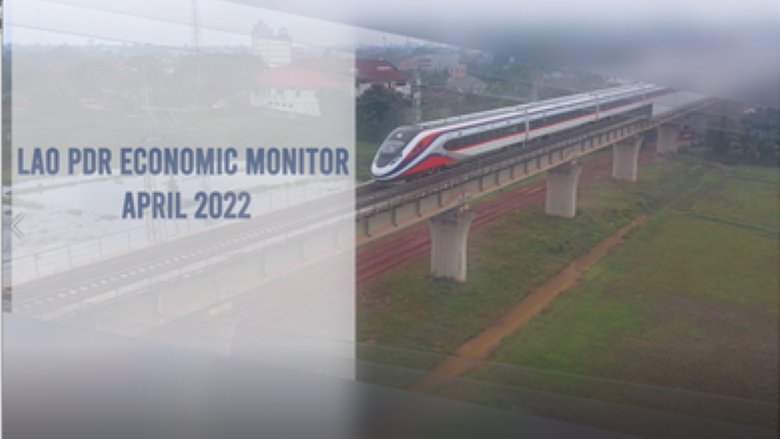Key Findings
As the Lao economy begins its recovery from the effects of the worldwide slowdown caused by COVID-19, the country faces challenges caused by long-standing macroeconomic vulnerabilities, and by new pressures, including rising global commodity prices and sharp exchange rate depreciation. Policy options are available to mitigate these threats.
· COVID-19 and the associated containment measures have heightened macroeconomic vulnerabilities and slowed economic recovery. Inflation increased from under 2% in February 2021 (year-on-year) to 9.9% in April 2022 and threatens living standards, especially in low-income urban households.
· The fiscal deficit declined in 2021, driven by higher domestic revenue and spending curbs. Domestic revenue rebounded to 12.4% of GDP in 2021, but remains below pre-pandemic levels and the regional average. High debt-service obligations and low revenue levels continue to limit the fiscal space for critical investment in human capital.
· Public debt levels have increased considerably since 2019, endangering macroeconomic stability. Public and publicly-guaranteed debt increased to 88% of GDP in 2021, with the energy sector accounting for over 30% of the debt stock, while the share of commercial debt has increased, adding pressure to liquidity management.
· Lao PDR faces both liquidity and solvency challenges due to its high debt service burden, poor revenue collection, limited financing options, and low foreign currency reserves. Debt sustainability continues to hinge on the outcome of bilateral negotiations with major creditors.
· The kip has depreciated sharply in 2021-22, by about 30% against the US dollar over the year up to April 2022, reflecting considerable external liquidity constraints. The limited availability of foreign currency, coupled with high demand — for imports and debt service repayments — has caused a demand-supply mismatch that creates strong depreciation pressures, despite significant debt service deferrals.
· Despite a trade surplus and resilient FDI inflows, foreign reserve buffers remain low. Energy and mining, as well as agricultural and manufacturing exports, were buoyant in 2021, supported by strong external demand and higher commodity prices. However, only 26% of export receipts flow back to the Lao economy, with the rest deposited offshore.
· Domestic credit accelerated at the end of 2021, with monetary policy looking to support economic recovery, but vulnerabilities persist in the banking sector.
· GDP growth is projected to recover to 3.8% in 2022, provided that ongoing debt renegotiations are successful and strict COVID-19 containment measures are not reinstated. A gradual recovery is expected in domestic services, while external demand will remain subject to slow recovery among trading partners.
· Long-term job losses and business closures caused by the spread of COVID-19 will continue to put pressure on household incomes. With prices rising, many households are at risk of falling into poverty.
· Global monetary tightening and rising interest rates could put further pressure on the kip, add to inflation, and increase debt burdens. This would constrain investment inflows and financing options. Prolonged war in Ukraine could further affect commodity prices, especially for fuel, while weaker-than-expected growth in key partners, particularly China, would curtail external demand.
· To restore macroeconomic stability, and thereby support the recovery and shared prosperity, the policy priorities are:
- Create fiscal space through better resource mobilization and spending efficiency;
- Restore debt sustainability by strengthening debt management and transparency.
- Strengthen financial sector stability through legal and regulatory tools
- Conduct structural and business environment reforms.
Unlocking the Potential of Regional Connectivity
Laos is looking to transform itself from a land-locked to a land-linked country through regional infrastructure development. Significant investments include the Laos-China railway, the East-West economic corridor, and key road networks. The challenge is to ensure that Laos can fully benefit from this improved connectivity, not only as a transit country but also through increased economic activity and export volumes, value-added services, and the creation of new and better jobs.
However, Lao investments in infrastructure development face risks. The cost of these investments is high and Laos will only benefit from improved connectivity if it can successfully undertake complementary policy reforms and improve connective road infrastructure. Business and investment environment reforms must be accelerated to capture the full benefits. In addition, the railway poses macro-fiscal risks associated with contingent liabilities and will also present social and environmental risks if management is not sound.
The following critical reforms could reduce the risks and maximize the benefits of improved connectivity:
- Address transport connectivity gaps to ensure open access to railway and logistics infrastructure, and efficient road links to production and consumption centers;
- Promote more efficient cross-border transit, improved logistics and value chains, simplifying market entry and removing operational barriers in the logistics sector;
- Deepen and accelerate trade facilitation reforms by establishing an effective transit management regime;
- Improve the business environment to attract investment and generate jobs;
- Improve access to and modernize business services;
- Promote more productive and job-creating sectors where Laos has a comparative advantage, for example, in high-value added agricultural products and nature-based tourism.
- Streamline tax incentives based on economic rationale, reducing state liabilities and ensuring compliance with the public debt management law.
- Improve compliance with social and environmental regulations through stringent assessment and enforcement.


